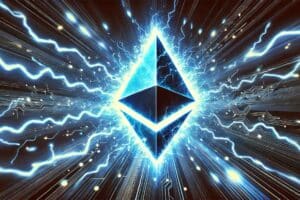Today, the renowned co-founder of Ethereum, Vitalik Buterin, published a post in which he describes a new solution for L2, called Surge.
The post is titled “Possibili futuri per il protocollo Ethereum, parte 2: The Surge”, and it is specifically dedicated to this solution.
The Surge: la nuova roadmap per i L2 di Ethereum
Layer-2 (L2) on Ethereum are those solutions that allow for handling many more transactions, and at much lower costs, compared to layer-1 (the Ethereum blockchain).
Despite the existence of many famous and widely used L2s, the goal of one hundred thousand transactions per second (100,000 TPS) is still distant.
According to Buterin, this must be the long-term development goal of the Ethereum ecosystem.
In the post published today, lengthy and very technical, the co-founder of Ethereum described what his long-term goals are, and in particular what the next step for the development of the Ethereum blockchain will be: Surge.
The idea of Buterin behind this development is that Ethereum should be perceived as a single ecosystem, and not as 34 different blockchains. It should indeed be remembered that many layer-2s have their own blockchain, based however on the security of Ethereum’s layer-1.
Furthermore, it also made explicit that one of the key objectives should be achieving over 100,000 TPS between L1 and L2, in addition to interoperability between the layer-2.
The balance between Ethereum and the L2: the new challenges of the program The Surge
The Dencun update in March had already made a small but significant step in this direction, causing the transaction fees on layer-2 to plummet.
According to Buterin, however, this approach has also introduced some new challenges.
For some time now, the development roadmap of Ethereum has been focused precisely on rollups (the layer-2), but there is a risk that extractive L2s could steal users and revenues from layer-1. This could increase security risks and “degrade” the native cryptocurrency Ether (ETH).
The co-founder of Ethereum believes that the project’s roadmap should also include new paths, such as data availability sampling, improving data compression, in order to make L2s more secure and reliable, as well as improving the user experience across different blockchains.
While on one hand Ethereum needs trustless rollups, on the other hand the development of these rollups should be similar to that of the mainnet.
The price of ETH
The annual maximum price of 2024 for ETH was about $4,100, and it was recorded in March.
Already at the beginning of May, however, it had fallen below $2,900, with a concerning -30% in two months.
Furthermore, after the launch on the US stock exchanges of the ETFs on ETH spot, at the end of July, the price of Ethereum continued to fall, reaching $2,200 at the beginning of September.
Currently, it is around $2,600, which is just over half of the all-time high of $4,900 in 2021, and well below even the annual high of 2024. For example, Bitcoin not only recorded a new high in 2024, but is currently only -9% from that high.
It should not be forgotten, however, that historically Ethereum outperforms Bitcoin during bull runs, while for the rest of the time it tends to underperform it.
For example, during the bullrun that started in October 2023 and ended in March 2024, ETH recorded a +160% in five months, with BTC beating it by a small margin (+170%).
In the event that a new major bullrun post-halving is triggered, it would not be strange at all if ETH started to outperform BTC, at least for a while.
Layer-1 and layer-2: the common goals
According to Buterin, all this also requires an expansion of Ethereum’s layer-1. He wrote that if L2s become very scalable and successful, but L1s remain capable of processing only a very low volume of transactions, risks could arise.
The proposed solution is to make specific functionalities and types of calculations more economical, but without sacrificing decentralization.
The goal is to make L2s perceived as a single unified Ethereum ecosystem with layer-1. Additionally, it aims for layer-2s to communicate more easily with each other in the back-end, to reduce complications for users.
For example, suppose that layer-2s can send tokens from one chain to another without having to manually bridge them or swap with native tokens of other chains to pay for gas.
It is an overall vision somewhat different from the one that Buterin had even just a few years ago, much more focused on rollups and their complete integration, rather than on the development of the same base-level Ethereum blockchain.
Despite this, however, to complete it, improvements to layer-1 will also be necessary.




















